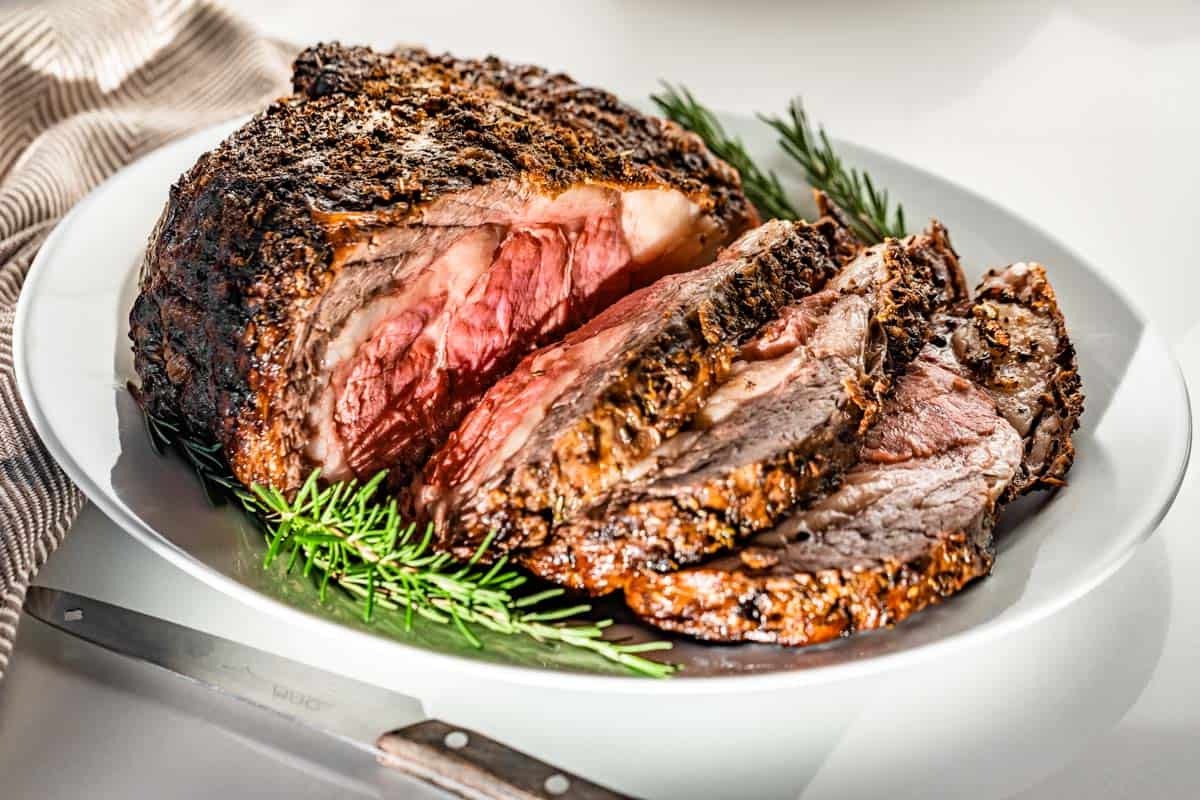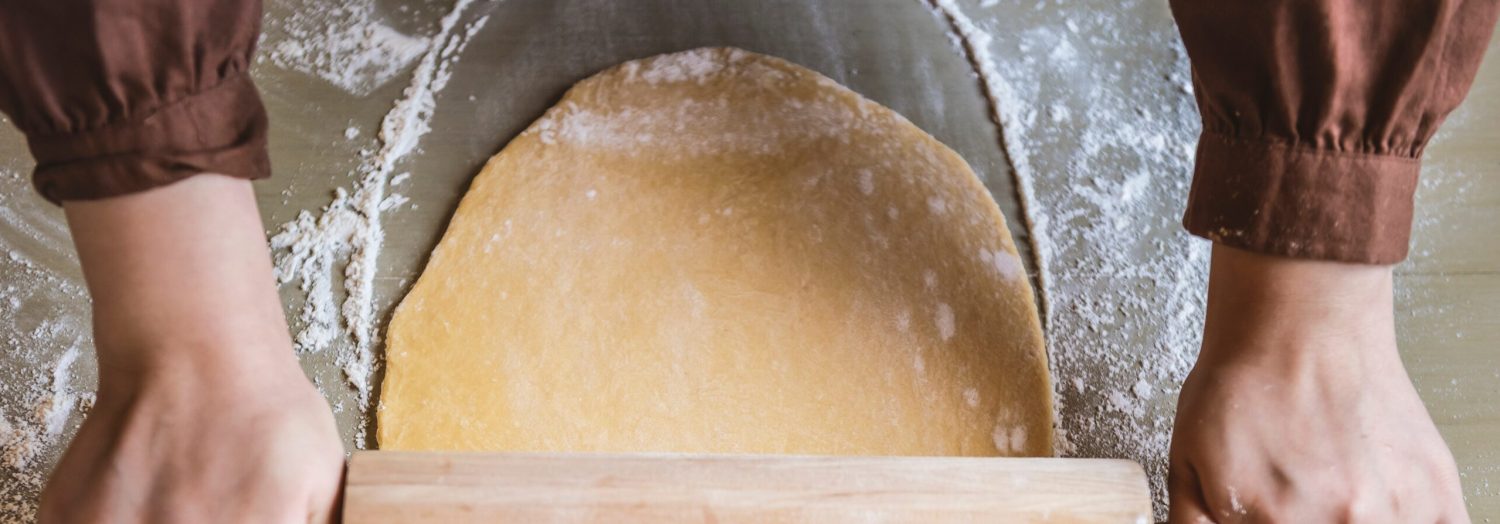A perfectly cooked rib eye roast is a centerpiece dish that can elevate any special occasion or family dinner. With its rich marbling and robust flavor, this cut of beef is both tender and juicy when prepared correctly. This recipe combines simple yet aromatic ingredients to enhance the natural taste of the rib eye.
While most of the ingredients for this recipe are common pantry staples, you may need to purchase fresh rosemary and a high-quality rib eye roast. Fresh rosemary can usually be found in the herb section of your supermarket, and it's worth seeking out for its fragrant, pine-like aroma. The rib eye roast is typically available at the butcher counter or in the meat section.

Ingredients For Rib Eye Roast Recipe
Rib eye roast: A premium cut of beef known for its marbling and tenderness, perfect for roasting.
Olive oil: Used to coat the roast, helping to create a flavorful crust.
Salt: Enhances the natural flavors of the beef.
Freshly ground black pepper: Adds a touch of heat and complexity to the seasoning.
Garlic: Minced to infuse the roast with a rich, savory flavor.
Rosemary: Freshly chopped to provide a fragrant, herbal note that complements the beef.
Technique Tip for Rib Eye Roast
To achieve a perfectly cooked rib eye roast, it's crucial to let the meat come to room temperature before roasting. This ensures even cooking throughout. Additionally, using a meat thermometer to check the internal temperature will help you avoid overcooking. Aim for 135°f (57°c) for a medium-rare finish. After roasting, let the meat rest for at least 15 minutes; this allows the juices to redistribute, resulting in a more flavorful and tender roast.
Suggested Side Dishes
Alternative Ingredients
rib eye roast - Substitute with sirloin roast: Sirloin roast is a leaner cut but still offers a good balance of flavor and tenderness.
olive oil - Substitute with avocado oil: Avocado oil has a high smoke point and a neutral flavor, making it a good alternative for roasting.
salt - Substitute with kosher salt: Kosher salt has larger grains and can enhance the flavor of the meat similarly to regular salt.
freshly ground black pepper - Substitute with white pepper: White pepper provides a similar heat and flavor profile but with a slightly different color.
minced garlic - Substitute with garlic powder: Garlic powder can be used in a pinch, though it has a more concentrated flavor, so use less.
chopped rosemary - Substitute with thyme: Thyme offers a similar earthy and aromatic flavor that complements roasted meats well.
Alternative Recipes Similar to Rib Eye Roast
How to Store or Freeze Your Rib Eye Roast
Allow the rib eye roast to cool completely at room temperature before storing. This helps prevent condensation, which can lead to sogginess.
Wrap the roast tightly in aluminum foil or plastic wrap to keep it fresh. For added protection, place the wrapped roast in an airtight container or a resealable plastic bag.
Store the wrapped roast in the refrigerator if you plan to consume it within 3-4 days. This ensures it stays fresh and safe to eat.
For longer storage, consider freezing the rib eye roast. Wrap it in a layer of plastic wrap followed by a layer of aluminum foil to prevent freezer burn. Alternatively, use a vacuum sealer for optimal preservation.
Label the package with the date of freezing to keep track of its freshness. The roast can be frozen for up to 3 months without significant loss of quality.
When ready to enjoy the frozen rib eye roast, thaw it in the refrigerator for 24-48 hours. This slow thawing process helps maintain the texture and flavor of the meat.
Reheat the roast gently to avoid drying it out. Preheat your oven to 250°F (120°C), place the roast in a baking dish, and cover it with foil. Heat until the internal temperature reaches 120°F (49°C) for a warm, juicy result.
If you prefer quicker reheating, slice the roast thinly and reheat in a skillet over medium heat with a bit of olive oil or beef broth. This method ensures even heating and retains moisture.
Leftover rib eye roast can be repurposed into delicious dishes such as sandwiches, salads, or stir-fries. Get creative and enjoy the versatility of this flavorful cut of meat.
How to Reheat Leftovers
Oven Method: Preheat your oven to 250°F (120°C). Place the rib eye roast on a baking sheet and cover it with aluminum foil to retain moisture. Heat for about 20-30 minutes, or until the internal temperature reaches 120°F (49°C) for a warm, juicy slice.
Stovetop Method: Slice the rib eye roast thinly. Heat a skillet over medium heat and add a bit of olive oil. Once the oil is hot, add the slices and cook for 1-2 minutes on each side until warmed through. This method is quick and helps maintain the roast's tenderness.
Microwave Method: Place slices of the rib eye roast on a microwave-safe plate. Cover with a damp paper towel to prevent drying out. Microwave on medium power for 1-2 minutes, checking frequently to avoid overcooking.
Sous Vide Method: If you have a sous vide machine, set it to 130°F (54°C) for medium-rare. Place the rib eye roast in a vacuum-sealed bag and immerse it in the water bath for about 1 hour. This method ensures even reheating without losing any of the roast's succulent flavors.
Gravy Method: Slice the rib eye roast and place it in a saucepan with some beef broth or gravy. Heat over medium-low heat until the meat is warmed through. This not only reheats the roast but also infuses it with additional moisture and flavor.
Essential Tools for Cooking Rib Eye Roast
Oven: Used to roast the rib eye at the specified temperatures.
Roasting pan: Holds the rib eye roast during cooking, allowing for even heat distribution.
Meat thermometer: Essential for checking the internal temperature to ensure the roast reaches medium-rare.
Cutting board: Provides a stable surface for carving the roast after it has rested.
Sharp knife: Necessary for carving the rib eye roast into slices.
Small bowl: Used to mix the olive oil, salt, pepper, garlic, and rosemary before rubbing onto the roast.
Basting brush: Helps to evenly coat the rib eye roast with the olive oil and herb mixture.
Tongs: Useful for handling the roast when placing it in the pan and removing it from the oven.
Aluminum foil: Can be used to tent the roast while it rests, helping to retain heat and juices.
How to Save Time When Making Rib Eye Roast
Prepare ingredients in advance: Mince the garlic and chop the rosemary the day before to save time.
Use a meat thermometer: This ensures you hit the perfect internal temperature without constantly checking.
Preheat the oven early: Start preheating while you prep the rib eye roast to save waiting time.
Line the roasting pan: Use aluminum foil for easy cleanup.
Rest the meat properly: Letting the roast rest ensures juices redistribute, making carving easier.

Rib Eye Roast Recipe
Ingredients
Main Ingredients
- 1 unit Rib Eye Roast about 4-5 pounds
- 2 tablespoon Olive Oil
- 2 teaspoon Salt
- 1 teaspoon Black Pepper freshly ground
- 4 cloves Garlic minced
- 1 tablespoon Rosemary chopped
Instructions
- Preheat your oven to 450°F (230°C).
- Rub the rib eye roast with olive oil, salt, pepper, garlic, and rosemary.
- Place the roast in a roasting pan, fat side up.
- Roast for 15 minutes, then reduce the oven temperature to 325°F (165°C).
- Continue roasting for about 1 hour and 15 minutes, or until the internal temperature reaches 135°F (57°C) for medium-rare.
- Remove the roast from the oven and let it rest for 15 minutes before carving.
Nutritional Value
Keywords
Suggested Appetizers and Desserts
More Amazing Recipes to Try 🙂
- Birria Quesa Tacos Recipe3 Hours 30 Minutes
- Peruvian Chicha Morada Drink Recipe55 Minutes
- Linguine with Clam Sauce Recipe35 Minutes
- Sausage Stuffed Jalapenos Recipe35 Minutes
- Cowboy Caviar Recipe15 Minutes
- Ground Beef and Potatoes Recipe40 Minutes
- Turkey Avocado Panini Recipe15 Minutes
- Chicken Wing Dip Recipe30 Minutes

Leave a Reply